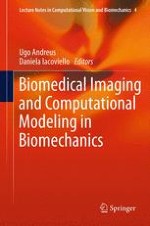2013 | OriginalPaper | Buchkapitel
Hip Prostheses Computational Modeling: FEM Simulations Integrated with Fatigue Mechanical Tests
verfasst von : Ilaria Campioni, Gianluca Notarangelo, Ugo Andreaus, Angelo Ventura, Claudia Giacomozzi
Erschienen in: Biomedical Imaging and Computational Modeling in Biomechanics
Verlag: Springer Netherlands
Aktivieren Sie unsere intelligente Suche, um passende Fachinhalte oder Patente zu finden.
Wählen Sie Textabschnitte aus um mit Künstlicher Intelligenz passenden Patente zu finden. powered by
Markieren Sie Textabschnitte, um KI-gestützt weitere passende Inhalte zu finden. powered by
